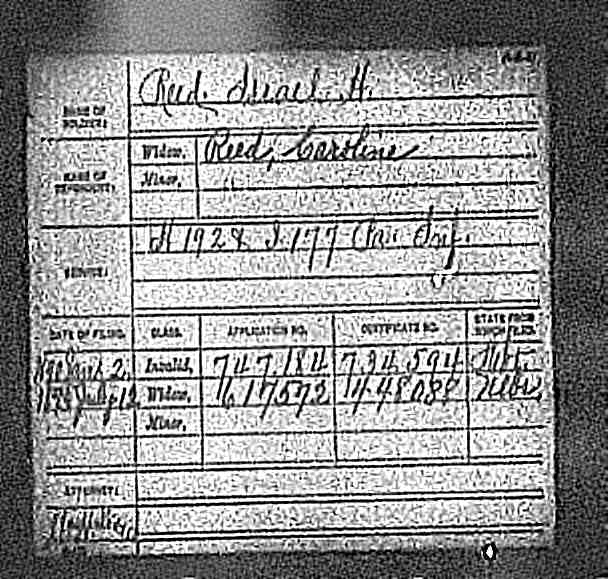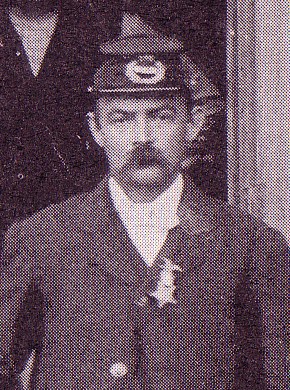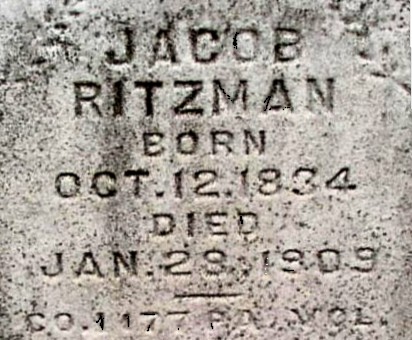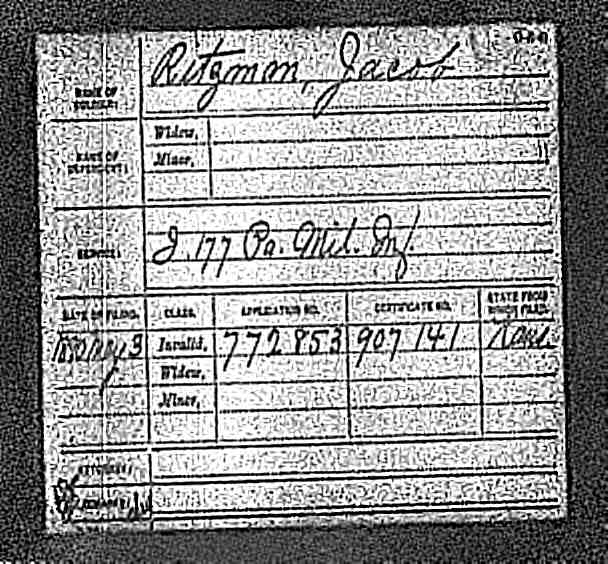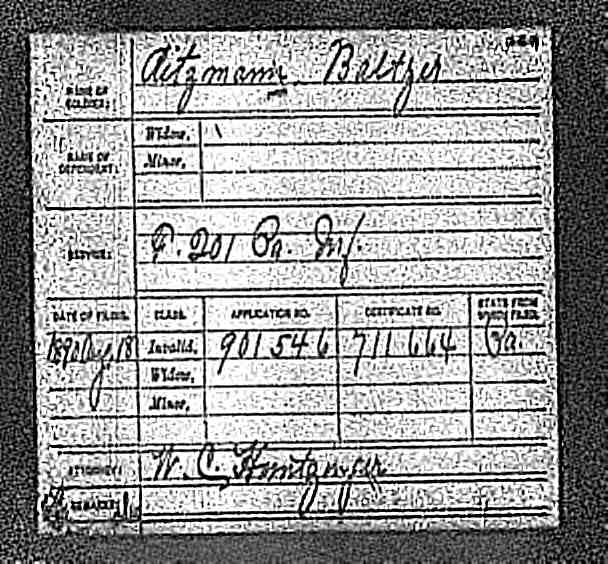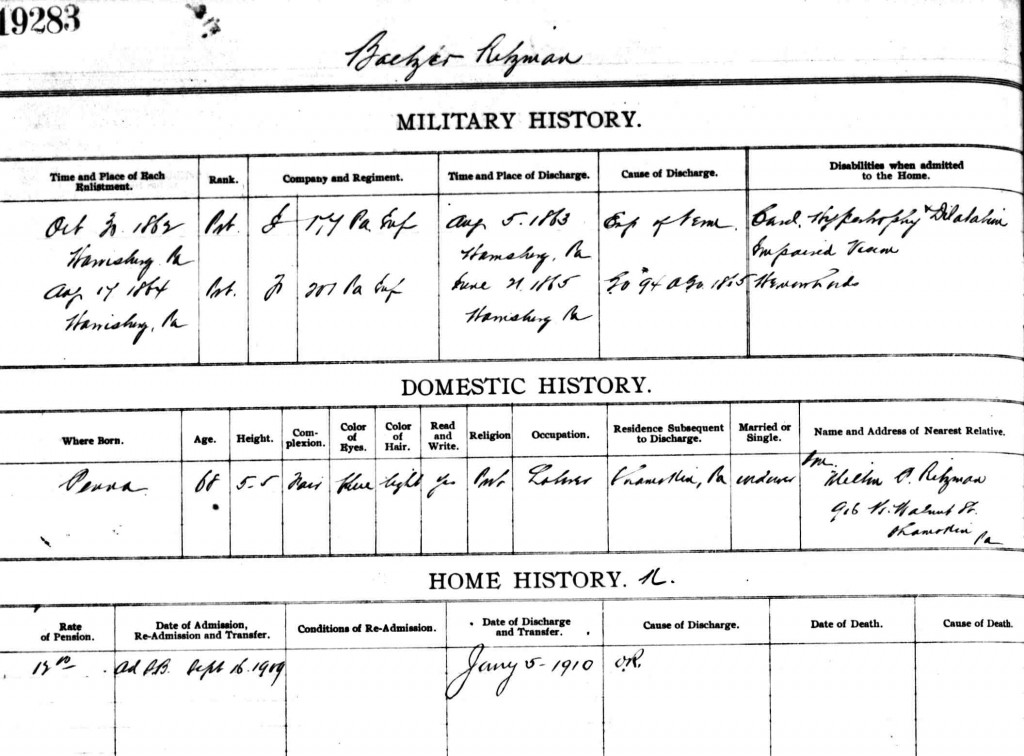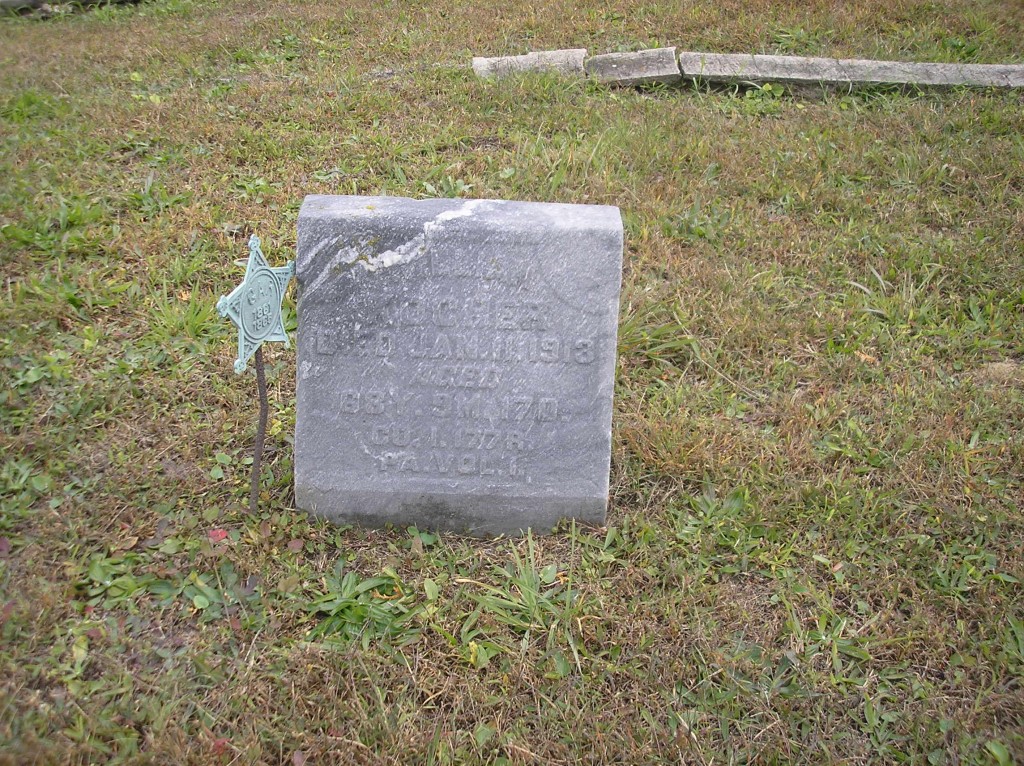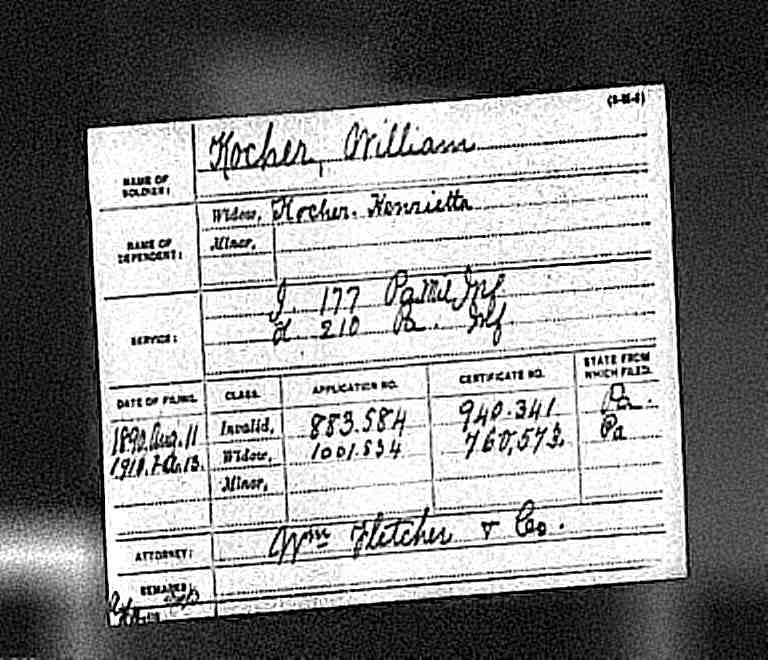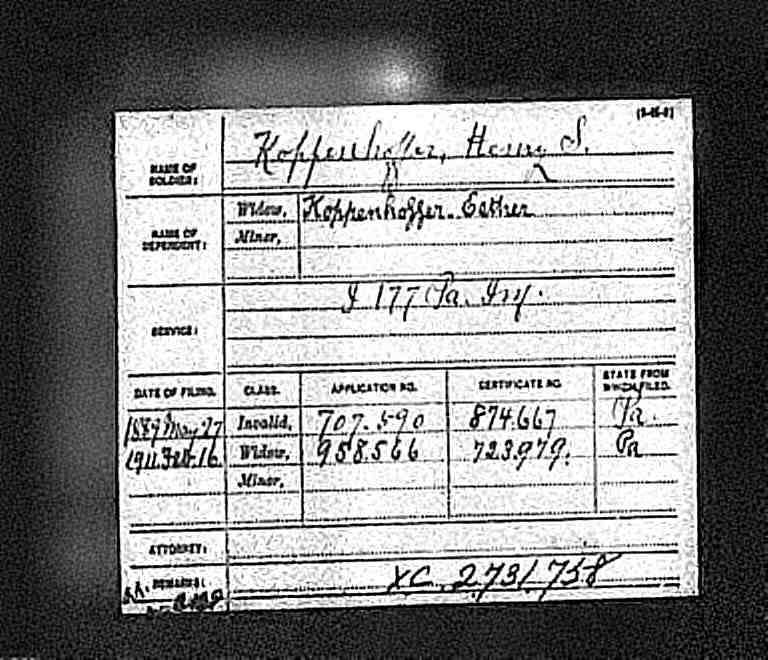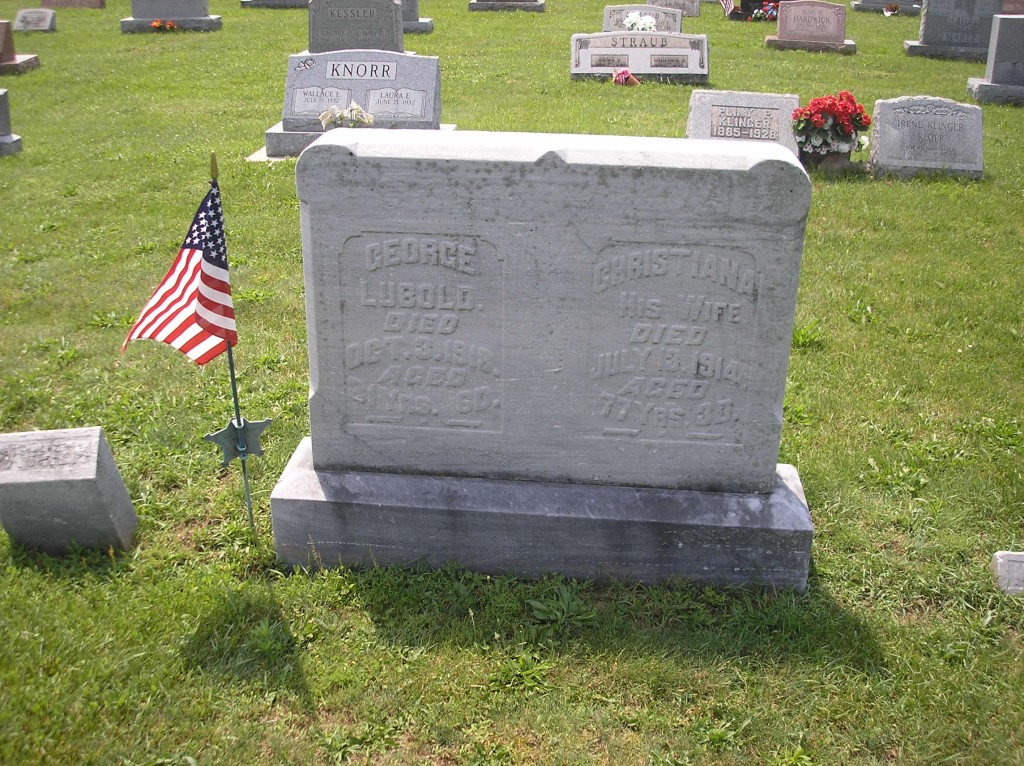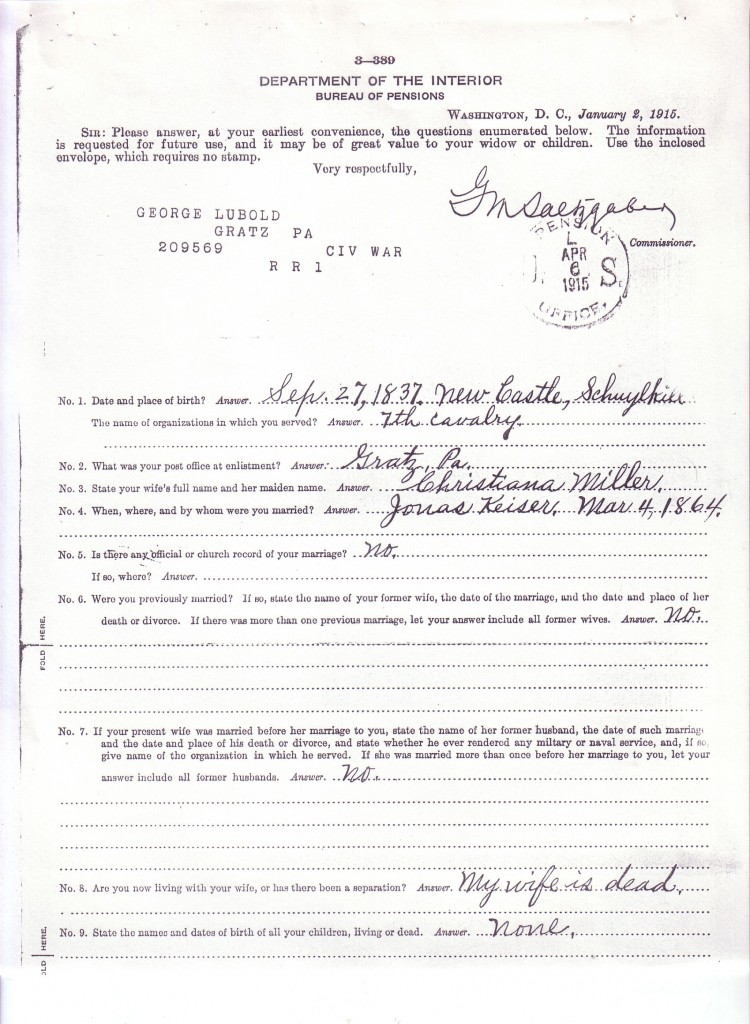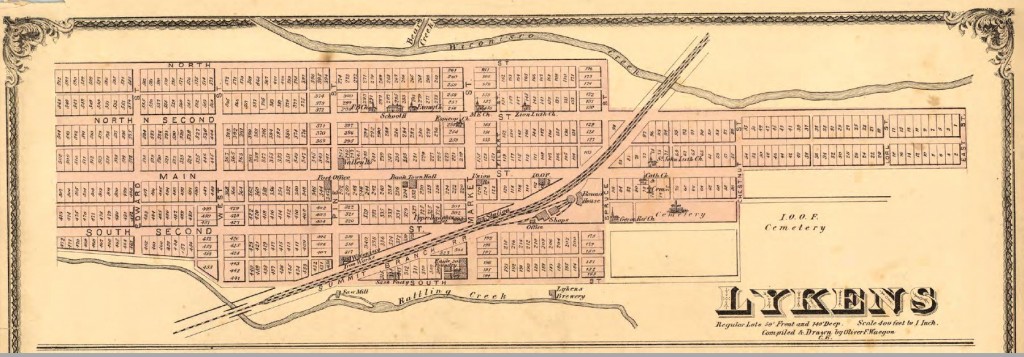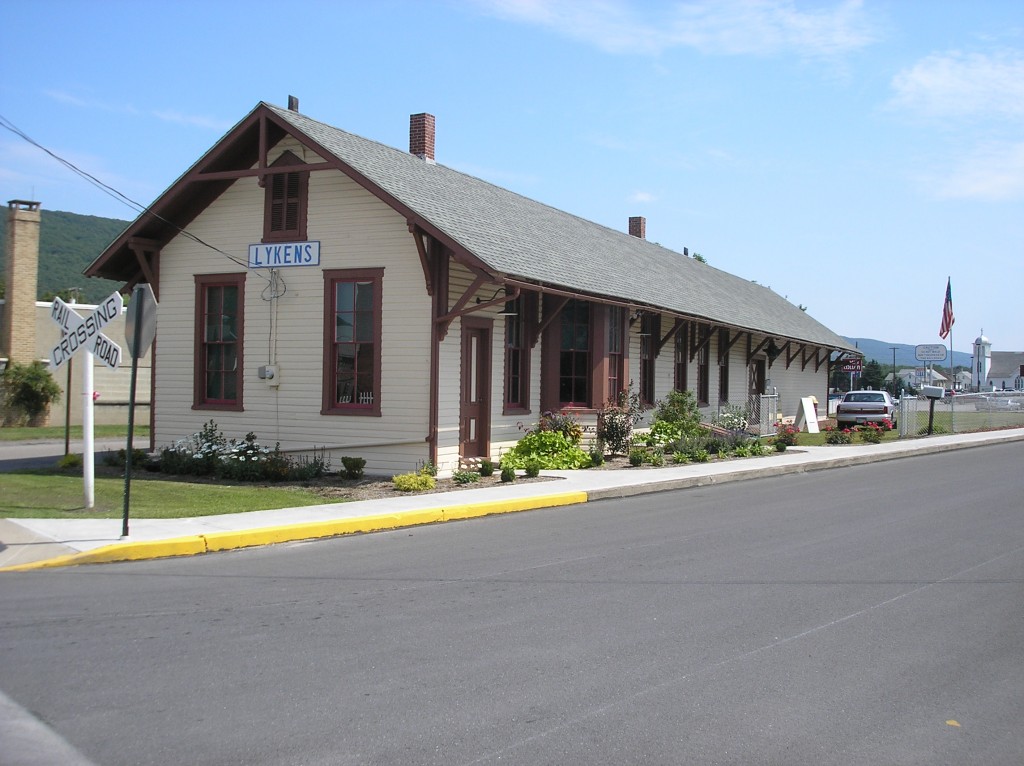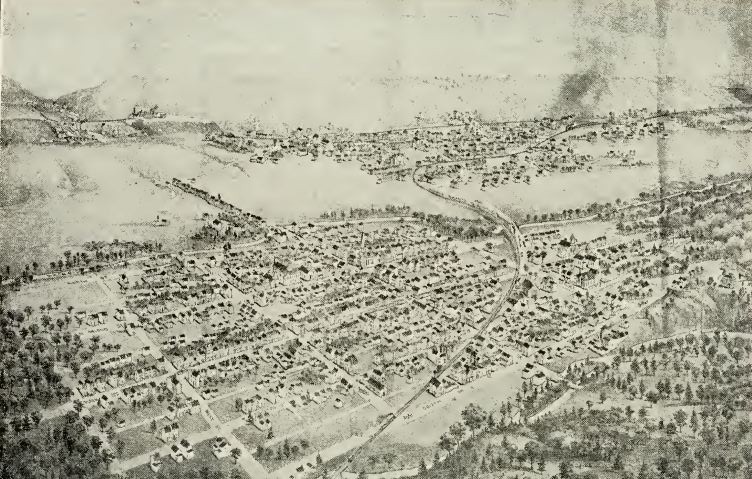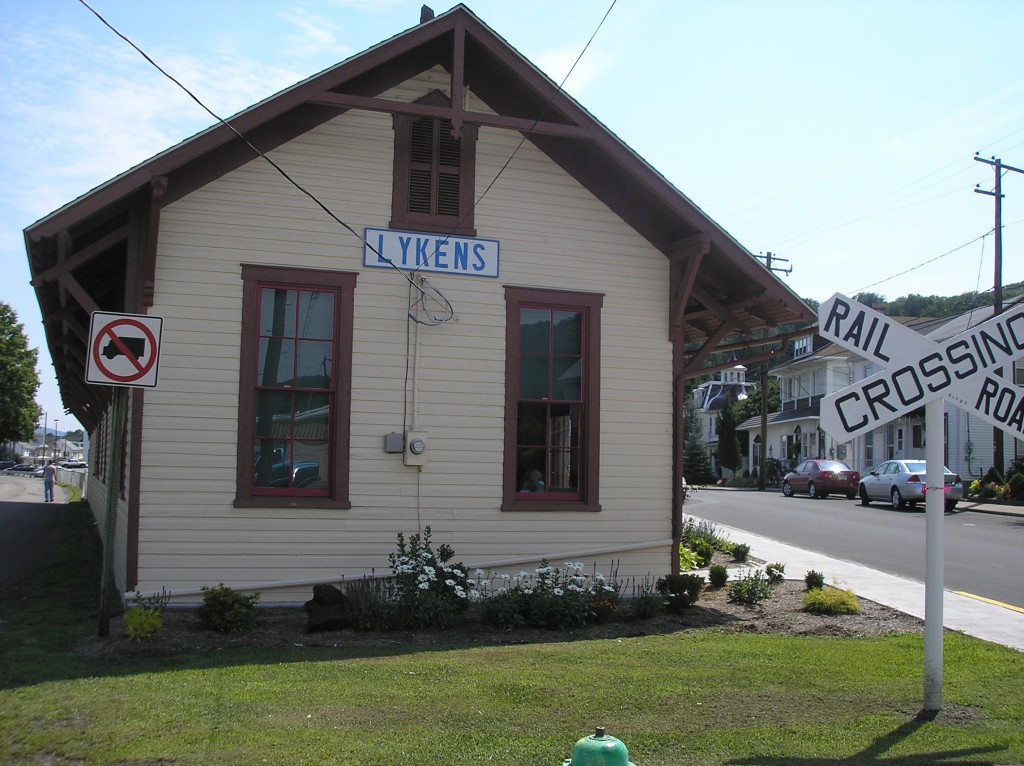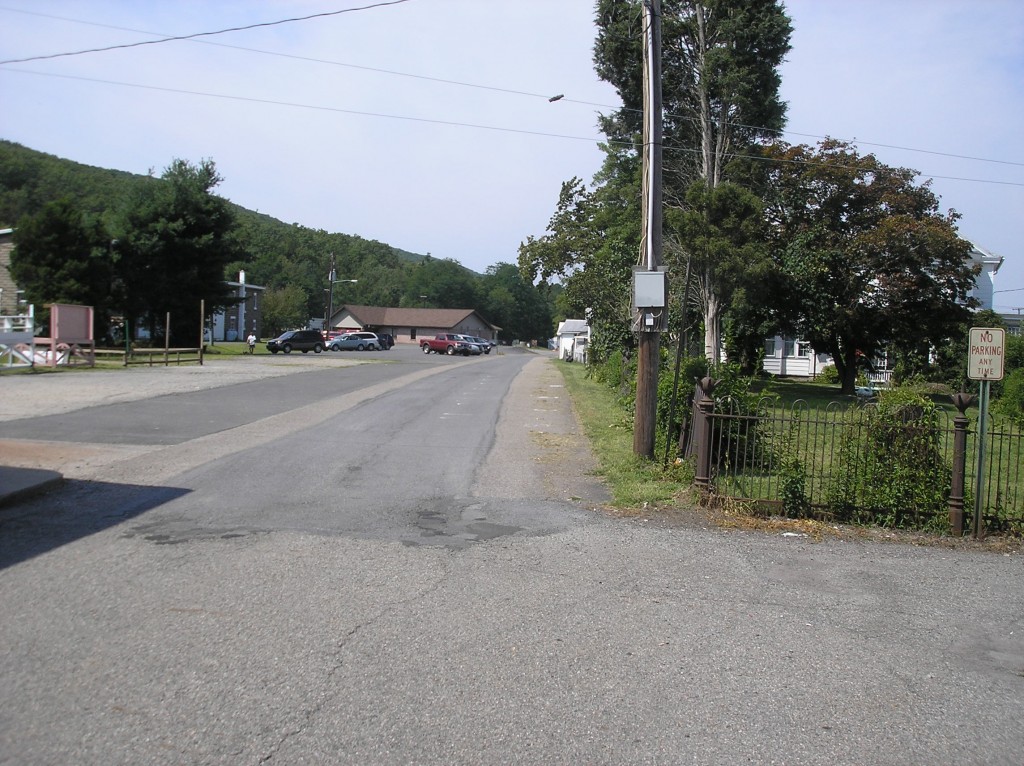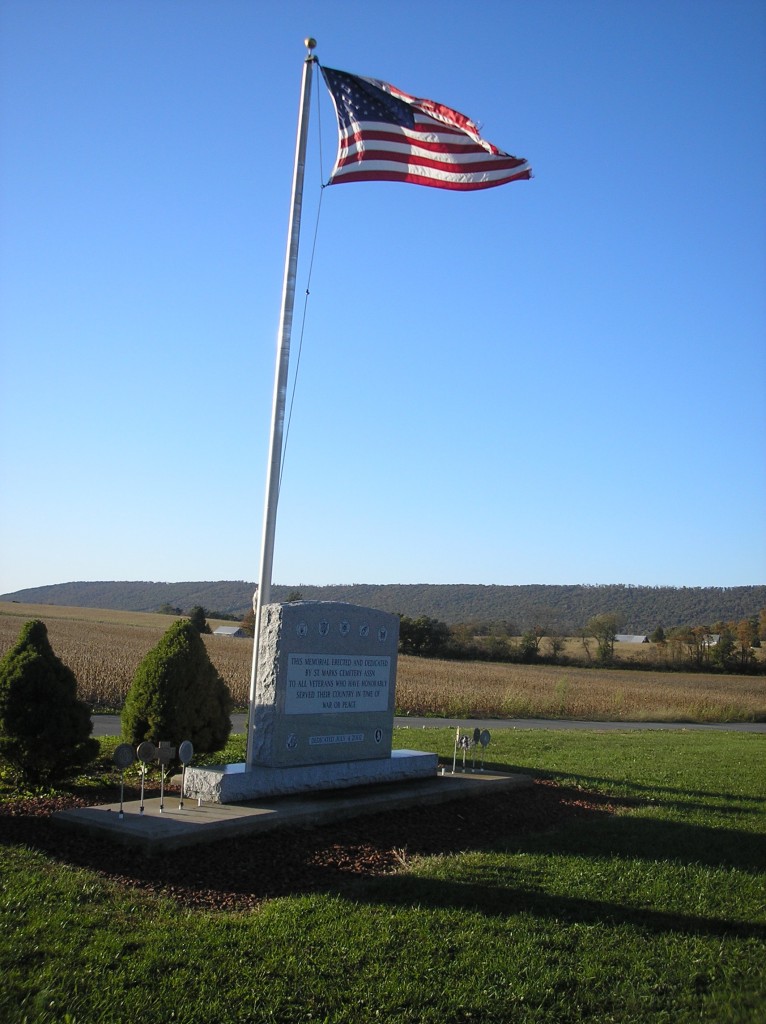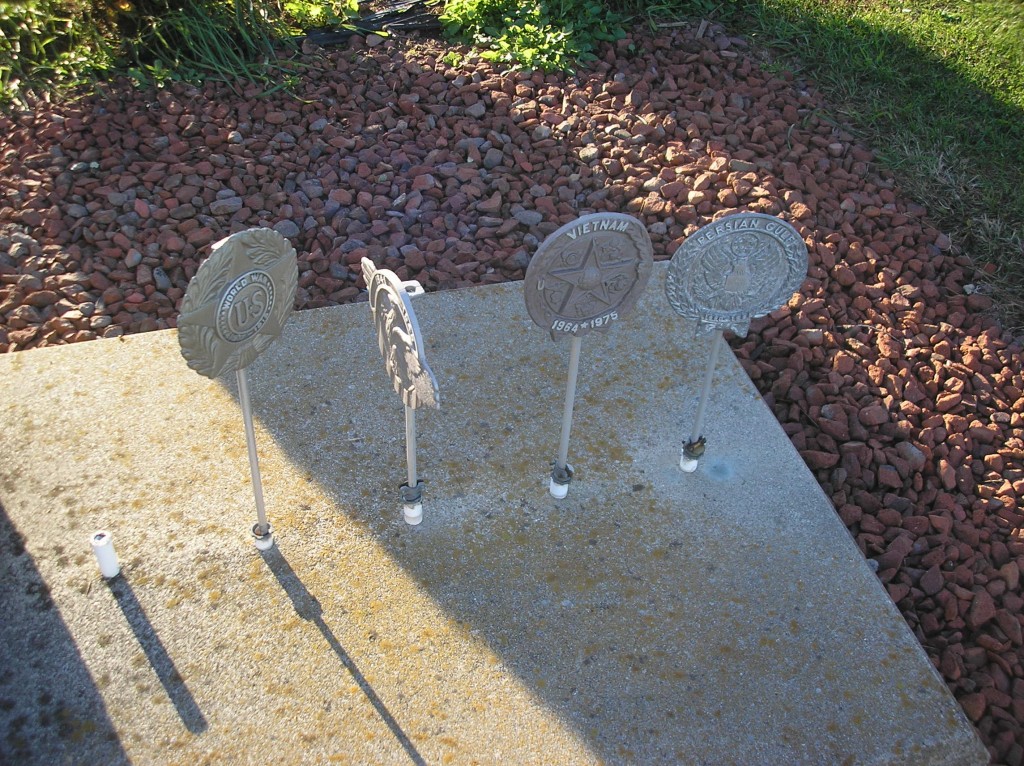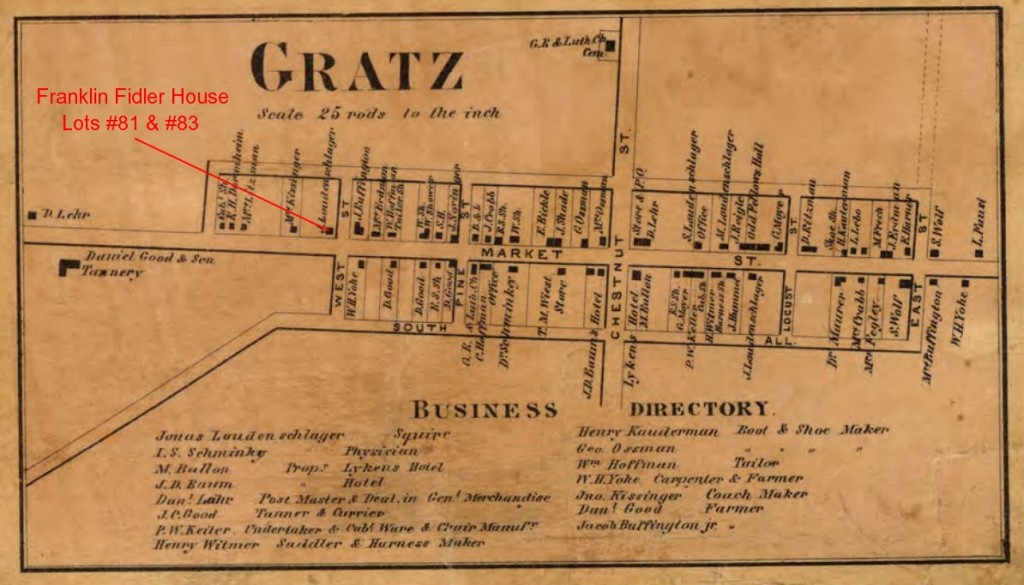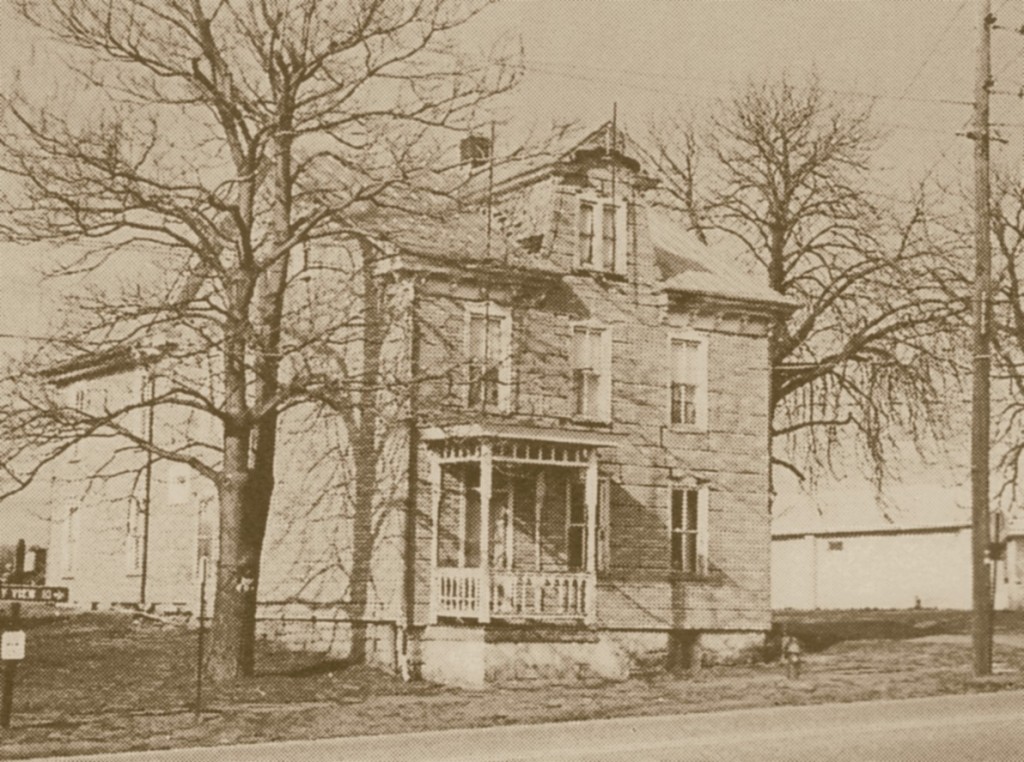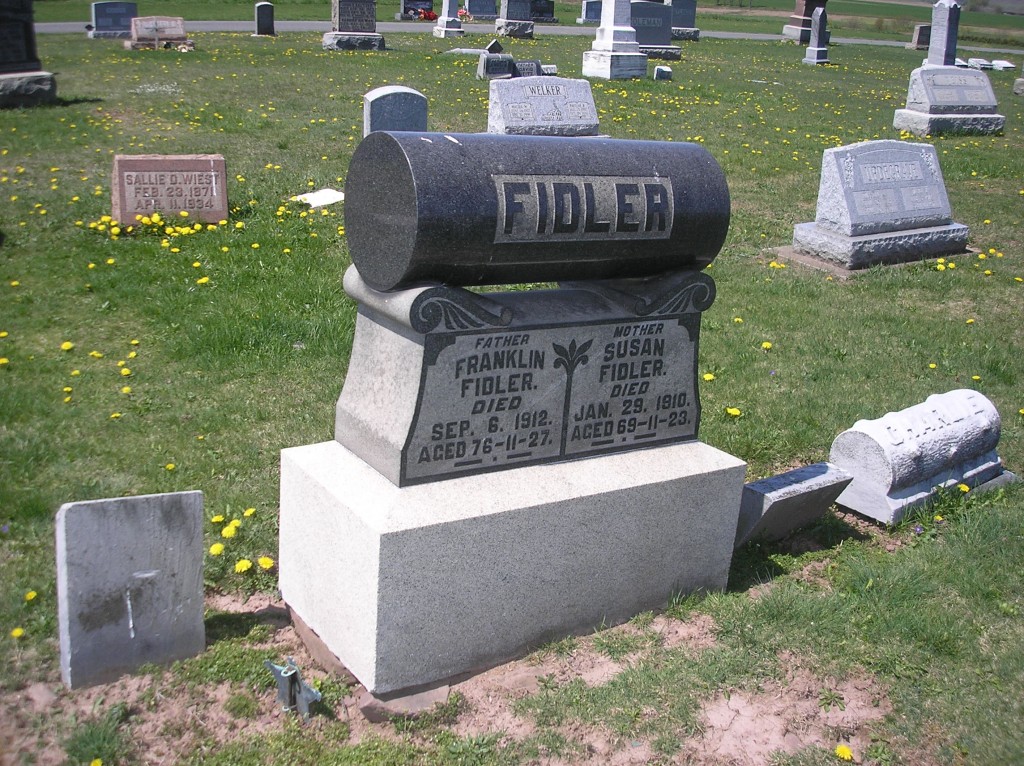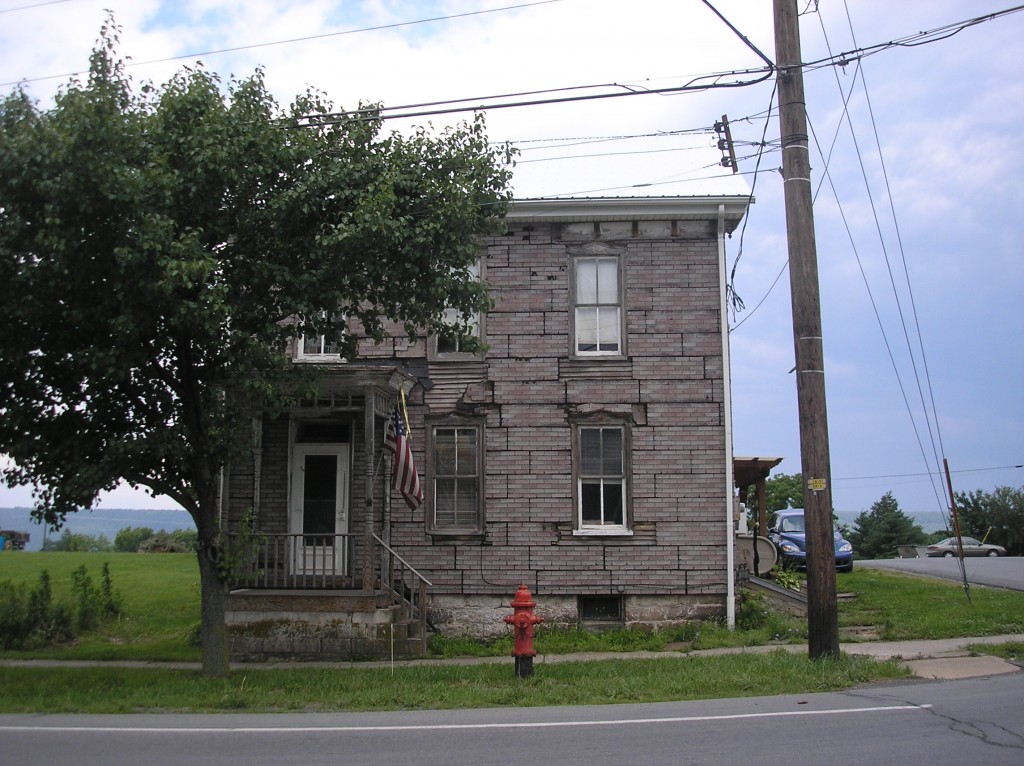Honorable Discharges – 177th Pennsylvania Infantry, Company I – Part 7
Posted By Norman Gasbarro on December 3, 2011
Today, the blog post again continues to feature members of the 177th Pennsylvania Infantry, Company I, who served the full term of nine months and received honorable discharges on 5 August 1863. The research results presented here are based on preliminary data gathering on each of the members of the company and searches for Pension Index Cards that reference the pension application files that are available at the National Archives in Washington, D.C. Some of the members of this company have been previously discussed on blog posts here and reference to those posts are provided with links.
In addition, much has already been written on Benjamin J. Evitts, the elected captain of this company (click here for previous posts on Benjamin J. Evitts). Click here for previous posts on the 177th Pennsylvania Infantry.
The 177th Pennsylvania Infantry, Company I,was a drafted militia that served for nine months. No member of this militia was reported injured as a result of a military act, so, theoretically, nearly all the pension applications should be post-1890, when “age” became the most significant factor for the veteran to receive a pension. This should be reflected in the date of application on the Pension Index Card. If the veteran died before 1890, there probably was no application made by the veteran, but it is possible that a widow applied. In the column for “Certificate Number,” if no number appears, this would indicate that an application was made, but no pension was awarded. If a number appears in the “Certificate Number” column, it can be assumed that a pension was awarded, although the date of the award cannot be determined from the Pension Index Card.
——————————
ISRAEL H. REED (1838-1895)
Israel H Reed, born in 1838 in Hegins Township, Schuylkill County, Pennsylvania, was a son of Abraham Reed (born about 1808) and Sarah [Harner] Reed. He was one of three brothers who served in the 177th Pennsylvania Infantry. In 1860, Israel was working as a farm laborer and living in Wayne Township, Schuylkill County in the household of Wendell Schwartz, a farmer. After his drafted service in the 177th Pennsylvania Infantry, Israel re-enlisted in the 192nd Pennsylvania Infantry, Company H, as a Private, on 21 February 1865 where he served until his discharge on 24 August 1865. Israel Reed married Caroline Shoop who had been previously married to a Deibler. Israel and Caroline had at least two children (dates approximate): Harry Reed (1870) and Carrie Reed (1878). In 1880, the family is found in Beaver, Boone County, Nebraska, where Israel was a farmer. He died in 1895 and is buried in Nebraska. For his Civil War service, Israel Reed received a pension, and after his death, his wife Caroline collected as a widow. For another discussion of Israel reed, see prior post, Pension Index Cards – 177th Pennsylvania Infantry – Company I.
—————————–
JOSEPH H. REED (1840-1921)
Born in 1840, Joseph H. Reed was the second son of Abraham Reed and Sarah [Harner] Reed (and one of three brothers) to serve in the 177th Pennsylvania Infantry. After his Civil War service, he married Anne Marie “Mary’ Herberling. According to all accounts, Joseph and Mary had no children. Joseph H. Reed resided in Tower City, Schuylkill County and the area around Good Spring where he worked as a day laborer. He was also active in the Tower City G.A.R. as is evidenced by the picture of him in his G.A.R. uniform and the inclusion of the picture in a Tower City anniversary commemorative volume. He collected an invalid pension which his widow claimed after his death. Not much more is know about Joseph’s life and activities. He died in 1921 and is buried in Greenwood Cemetery, Tower City.
—————————-
ABRAHAM H. REED (1843-1917)
Abraham H. “Abe” Reed was the third of three brothers to be drafted into the 177th Pennsylvania Infantry. Just prior to the Civil War, he was still living with his parents in Hegins Township, Schuylkill County. After his first service in the 177th Pennsylvania Infantry as a Private, Abe re-enlisted into the 208th Pennsylvania Infantry, Company A, as a Sergeant. On return home from the war, he married, and he and his wife Sarah began raising a large family. Their known children were (birth years approximate): John F. Reed (1868); Mary H. Reed (1873); Harrie R. Reed (1877); Bessie Reed (1879); Charles G. Reed (1890); and Annie G. Reed (1891). In 1880, the family was living in Porter Township, Schuylkill County, and Abe was working as a fireman. Later, he moved to Tower City and worked as a stationary engineer. Abraham Reed colelcted a disability pension which was connected to his Civil War service. His wife Sarah, preceded him in death. Abraham Reed is buried in the Greenwood Cemetery in Tower City.
—————————–
JACOB RITZMAN (1834-1909)
There are at least two persons named Jacob Ritzman living in the area of the Lykens Valley. The one of this record served in the 177th Pennsylvania Infantry and was never married (according to pension papers available to the Civil War Research Project. He is buried in Oak Hill Cemetery, Millersburg, and apparently is the one who is named on the Millersburg Civil War Monument. There is another Jacob Ritzman who lived in the Gratz/Lykens Township area who was married to a Lydia Ann Paul. This other Jacob Ritzman may not have served in the Civil War and was still alive and living in Shamokin, Northumberland County, in 1910.
The Jacob Ritzman who served in the 177th Pennsylvania Infantry applied for his pension from Kansas in 1890. At this time it is not certain that he is related to the other Ritzman in the 177th Pennsylvania Infantry, although this other Ritzman (Balthaser Ritzman – see below), had a brother Jacob Ritzman. According to information on the grave marker in Oak Hill Cemetery, Millersburg, Jacob Ritzman was born on 12 Ocotber 1834 and died 28 January 1909 and served in the 177th Pennsylvania Infantry, Company I. Information in his pension file notes he never married and had no children. By trade, he was a blacksmith. There is a Jacob Ritzman who was found in the 1863 Draft registration records for Mifflin Township who was a blacksmith, who was unmarried, and who had nine months of civil war service. There is also a Jacob Ritzman who appears in the 1860 census for Berrysburg who is a blacksmith and living with a 17-year old blacksmith named Henry Copenahuer (possibly the same Henry Koppenhaver who also served in the 177th Pennsylvania Infantry). The last census in which this Jacob Ritzman is found is the 1870 census for Washington Township, Snyder County, where he is living in the household of a James Earlty, a wagoner. How and when Jacob Ritzman went to Kansas or when he returned is unknown, but the pension record indicates that he died in Upper Paxton Township in 1909.
—————————–
BALTHASER W. “BALZER” RITZMAN (1841-1910)
Balthaser Ritzman was born in Dauphin County, Pennsylvania, in 1841. His parents were Johannes Ritzman (1792-1860) and Anna Catharine [Matter] Ritzman (1800-1852). His first name is found in the records as Balzer, Balthazer, Balser, Blatzer, Baltzer, as well as other variations. His grave stone in Shamokin Cemetery, Shamokin, Northumberland County, gives his name as “Balzer Ritzman.” In 1860, Balthaser was living as a servant in the household of Michael Hartman, a farmer in Gratz. After his drafted service in the 177th Pennsylvania Infantry, Balthaser Ritzman joined the 201st Pennsylvania Infantry and mustered in on 17 August 1864. He was mustered out on 21 June 1865. The Pension Index Card for Balthaser Ritzman only notes his service in the 201st Pennsylvania Infantry, but another record, that of the veterans’ home in Hampton, Virginia, notes both the 177th Pennsylvania Infantry and the 201st Pennsylvania Infantry (see home record above – click on record to enlarge). Balthaser was an inmate in the Hampton home in 1909, but was released and went to Shamokin in early January 1910, where he died.
During his lifetime, Balthaser Ritzman worked as a servant, a day laborer, and teamster and lived in Gratz, Lykens Township, and Shamokin. He was married twice, the first time to Sarah Ann Faust, with whom he had two children: Emma Ritzman (born about 1868) and William Ritzman (born about 1869). By 1880, Sarah had died and Balthaser was a widower living as a boarder in the household of Jorias Kissinger of Gratz. He re-married on 10 January 1884 to Amanda Bressler. She too died before he he did as the veterans’ home record indicates that in 1910, he was a widower at his death and his nearest relative was his son William, then living in Shamokin.
——————————
The continuation of the “Honorable Discharges” of the 177th Pennsylvania Infantry, Company I, will appear tomorrow.
 ;
;
